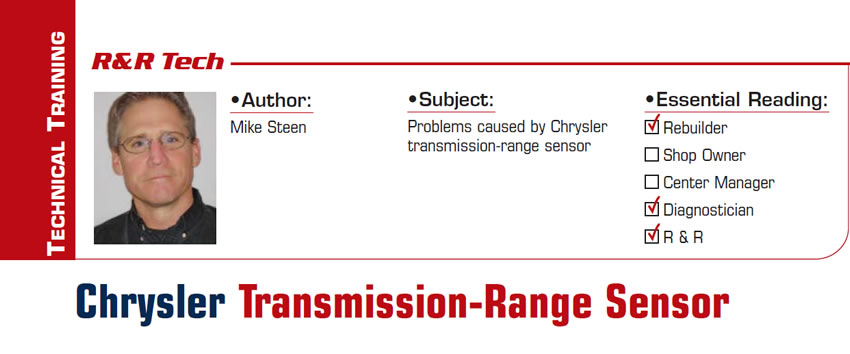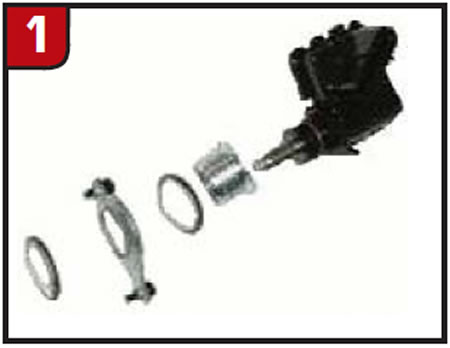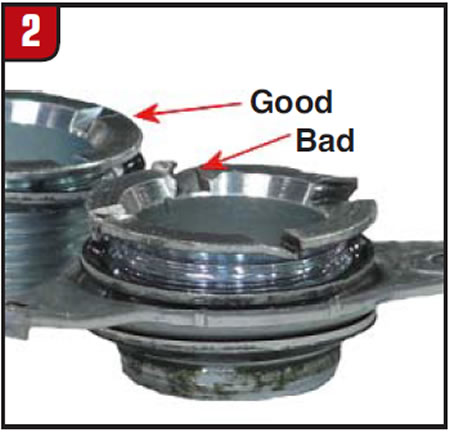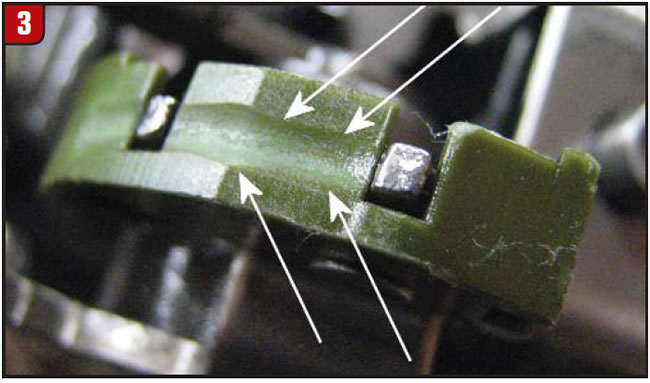
R&R Tech
- Subject: Problems caused by Chrysler transmission-range sensor
- Essential Reading: Rebuilder, Diagnostician, R & R
- Author: Mike Steen
The transmission range sensor (TRS) has three primary functions:
- Provide a Park/Neutral start signal to the engine controller and the starter relay.
- Turn the backup lamps on when the transmission is in Reverse and the engine (ignition) is on.
- Provide a transmission-range signal to the instrument cluster.
This relatively simple sensor has caused us problems over the years.
In one instance, right after a fresh installation at our store in Lincoln, they had an alarming problem. With the vehicle running and in the park position, if you took your foot off the brake or opened the door to get out, the horn would start honking and the headlights would start flashing.
They also noticed that the indicator lights weren’t functioning correctly. When they put the vehicle into Park position the “P” on the indicator would not light up. This condition was not there with the original unit.
They pulled the pan and found that the neutral-switch pin that rides on the rooster comb was not contacting the comb when in the Park position. This was a late-model unit and used the range-sensor-style switch.
The issue was that the bracket between the case and the adapter had two washers installed between the adapter and the case. This moved the sensor too far from the rooster comb. The computer could not sense that the vehicle was in park and triggered the out-of-Park alarm.
Proper installation is to install one washer on each side of the bracket (Figure 1). This unit had three washers, with two installed between the bracket and case. Removing one of the washers next to the case corrected the problem.

You also should be careful when replacing the TRS mounting bracket. Any damage (Figure 2) or improper assembly of the bracket also can cause the TRS to give a faulty reading. The linear motion of the TRS is so short that a few thousands of an inch is enough to cause the TRS not to read properly.

When installing the TRS mounting bracket, torque the bracket to 25 lb.-ft. using Chrysler adapter # 8581 or equivalent. The torque for the two screws that hold the TRS to the bracket is 30 lb.-in.
Another complaint we’ve seen with this setup is no Park or you are unable to move the shifter linkage all the way into the Park position.
If you have this complaint, first check to determine whether the transmission has the late-style TRS. If it is correct, try removing the switch. If you’re now able to get Park, there’s a good chance the neutral-safety backup insulator (Figure 3) is worn.

The new style TRS applies more force to the plastic insulator than the previous neutral-safety backup switch and can wear it to the point that the linkage can’t get past one of the contacts. To repair the problem you will need to remove the valve body and replace the insulator.

Mike Steen is the manager of Certified Transmission’s Technical Department.













